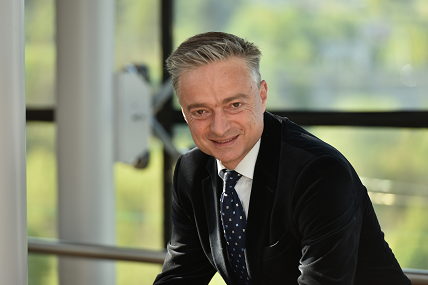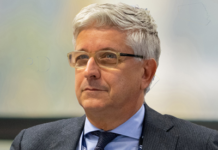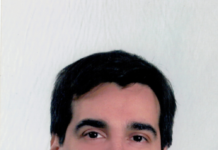
STMicroelectronics hosted a virtual media event based on its annual sustainability report. Jean-Louis CHAMPSEIX, Group VP, Head of Corporate Sustainability, STMicroelectronics, share ST’s major achievement and how ST is taking care of its sustainability goals which include the well-being of people, its employees, the environment and the planet. He also shares some use cases of greenhouse gas and carbon footprint reduction along with energy consumption examples
STMicroelectronics has recently issued its 25th annual sustainability report. How is ST addressing the world’s challenges of sustainability?
Jean-Louis CHAMPSEIX: I would like to add that thanks to these thirty years of experience, leading corporate social responsibility on the environment and safety, we are in a very good position to address the world’s challenges of today. For example, in the past two years, we be capable to manage the health and the well-being of our employees during the COVID phases, thanks to our very advanced health and safety measures. We are also very well-positioned to manage all the risks related to climate change, water scarcity and water flooding. Indeed, we are leading the semiconductor industry in terms of carbon emissions, and we are also taking measures since 1994 on energy-saving, which brings us a competitive advantage when energy price is increasing.
ST is one of the biggest manufacturers in the semiconductor domain. How does ST incorporate its sustainability goals in the product life cycle, right from raw material to final product?
Jean-Louis CHAMPSEIX: ST is the unique semiconductor player that has a product life cycle approach. For more than eleven years now, we have programs but compute the impact of our product from the raw material to the end of life. Not only we apply a lot of standard cause the life cycle of the product, but also we develop very advanced low-power solution like STM32 solution for example, or enabling technology like silicon carbide or GaN, while focusing on environmental and well-being applications.
All our products, systematically go through eco-design process. 100% of our mineral sourcing is conflict-free. Many years ago, we have defined a norm which is called ECOPACK®, that it’s far more stringent than REACH and RoHS standards, in order to implement continuous improvements above norms. We are also the unique semiconductor to follow most advanced ISO standards, such as ISO14064 that certifies all our tracking and consolidation of CO2 emissions. We also follow the most advanced standard such as IECQ08000 when it comes to hazardous substance management, enabling our customers to recycle our products.
What are ST’s major achievements for a sustainable world?
Jean-Louis CHAMPSEIX: The main three achievements that we are very proud of.
No.1, we have done 12.8 billion US$ revenue last year, many years in advance versus our three-year plan. In 2022 we will generate more than 15 billion US$ of revenue, also several years in advance of our business plan. We will certainly exceed a lot the percentage of responsible revenues that we committed to reaching 30% by 2025. We already reached 20% in 2021 and this number is continuously increasing, so we are in advance both in revenues and in responsible revenues.
We are also four years in advance in terms of safety, because we reached an employee recordable case of 0.12% by last year, and 0.15% including contractors, achieving our 2025 goals. And this year we will continue to improve on that.
And we are also very much ahead in terms of carbon neutrality on all indicators of CO2 and renewable energy, but I’m happy to report as well that this year in 2022 we may be very close to our energy efficiency 2025 target.
Each time we reach a target, we are committing publicly to a new one. We are committed to never stopping our sustainability journey. That’s why in our Sustainability Chapter we have 2025 and 2027 goals, and in coming years we will release 2030 goals, Since each time we reach a goal we define a new 5-7 years one.
What are ST’s priorities in terms of sustainability achievement?
Jean-Louis CHAMPSEIX: We do sustainability in a sustainable way, and the first thing we do in that respect is prioritised, people. We are very happy to report that last year ST was No.1 in the semiconductor in terms of safety performance with 0.12 per cent of recordable injury cases for employees. We are also proud that if we include contractors in this ratio, it reached 0.15 per cent which is our 2025 target. So last year we achieved many years in advance our 2025 target, and this year in 2022, this fantastic result will be even improved further, because we may end up the year with around 0.10 per cent for employees.
We work very hard on everyday behaviour coaching conversations with managers and employees and we tolerate zero risk in safety, and again ST has many years of experience in that.
When it comes to COVID management, not only do we protect the employees, but we also provide vaccination wherever it was not very available. We made more than 500,000 donations, and we put in place the most advanced well-being strategy including psychosocial risk prevention and 24/7 assistance, not only to all employees but also to their families.
The second important pillar in the way we do sustainability for now almost thirty years is the environment. As you know ST has a very ambitious commitments, being the first semiconductor to be carbon neutral by 2027 and to be compatible by 2025 with the most aggressive scenario of 1.5C of Paris COP21. This commitment is also validated by the Science Based Target organization (SBT). We have several additional commitments on climate change.
We are also committed to improving our energy consumption. Our 2025 goal is to improve energy efficiency by 20% vs 2016. This year in 2022 just to give you a flavor, we are close to reach that 2025 ambition. On top of that we have another 2027 ambition to reduce in absolute by 150 Gigawatt versus 2018. Today we have already implemented actions to make 88 Gigawatt of energy savings.
Last but not least, we are also committed to using 80% of renewable electricity by 2025 and 100% of renewable electricity by 2027. Last year, we already procured 51% of our electricity from a renewable source, and this year we will be certainly more than 58%, so we are very much in advance here.
Can you brief about the ST carbon footprint reduction example in Singapore?
Jean-Louis CHAMPSEIX: In Singapore, we have the new district cooling system, which is a very ambitious system, with a twenty-year contract of value around 370 million USD. This will bring further additional savings thanks to volume efficiency. The difficulty of doing energy saving is that since we started thirty years ago, we are already very advanced, so it’s difficult now to find new opportunities unless we bring long-term partnership. And we will save additional 120,000 tons of carbon. This is a win-win-win solution, in that it frees up some space in Ang Mo Kio to install other PFC abatement equipment for example, so it’s a very powerful example.
How is ST keeping a check on its carbon neutrality by 2027 goal?
Jean Louis CHAMPSEIX: Thank you for your question. At ST we automatically monitor all performance of the sustainability every month. We have quarterly review with the CEO and all the presidents on all the performance. Internally, we publish the performance of the company and all the indicators. And here, I just show you an extract of this. Every quarter, we report also to the supervisor board with all indicators, and qualitative assessment of the risks. And of course, we have a monthly program review because we this is the way to embark all of the employees and leaders of the company through hundreds of programs. We have many global transformation programs on the topics I have mentioned for 2022 and 2023. For example, at the end of November this year, we have a workshop with the top 250 leaders of the company, on what it means to be sustainable leaders in the next 3 years. Following this workshop, we will adjust the leadership development for these people.
And just to conclude, we report some of these progress in the company presentation. We also have moved to the electronic version of the sustainability report in the order in the future to be capable to provide some data every quarter automatically. And another aspect that we are very proud of is that we created a predictability system. With the current production growth and the change of mix of technology, we are capable to estimate the carbon CO2 that we are going to emit in one, two or three years. It is difficult, but we have it. We know when we take a decision, what will be the impact on greenhouse gas or water efficiency. And again, recently Ang Mo Kio presented the preventive plan to our CEO which has been very impressive. Depending on the decision, we can see the evolution of water or greenhouse gas emission at Ang Mo Kio in the next three years. And it’s true for all the production sites.


















